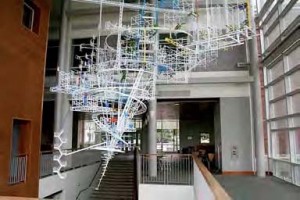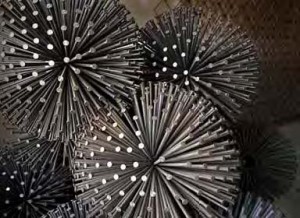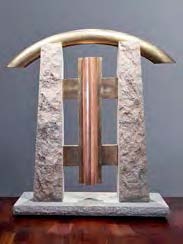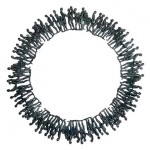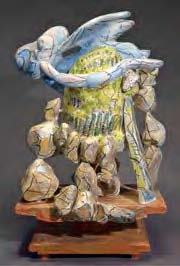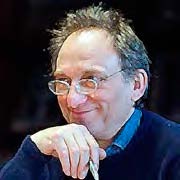
The surgeon, the poet, the financial analyst and the artist need visual awareness—awareness gleaned from intense observation of the material world, as well as awareness culled from experimentation in the studio. For Milton students, the chance to build this acuity starts early and includes everyone. Today, all Class IV students encounter a visual arts program that stretches back to the days of Richard Bassett, a famed studio teacher in the ’60s. Also, from tooting the penny whistle to perfecting the French horn, from writing computer code to probing the origins of Islam, from scaling Mount Washington to learning how to wrestle, doors for exploration and adventure surround us here. When I arrived in 1985, Headmaster Jerry Pieh insisted that our students be encouraged to follow their inclinations and dreams: to the lab, the boardroom, or the wood shop.
Getting absorbed, committing to a process, connecting with others, and meeting the highest standards were the prerequisites. That attitude permeates Milton culture still; that spirit drives our students. Over the years, particularly daring graduates opted for the arts, where career paths are notoriously circuitous. We highlight five who made major contributions to our cultural conversation.
Sarah Sze ’87
A MacArthur grant-winner at the age of 34, Sarah plays with the tenuous relationship between becoming and disintegrating, the quotidian and the mysterious. Somehow her work delicately adjusts that maelstrom to suggest the possible, optimistically in what seems like an incidental whirlwind of being. Her installation in Milton’s Schwarz Student Center continues to provoke, threaten, cajole, encourage and show what ideas, when spatialized, look like in the midst of resolution. Sarah tossed the entire carpenter’s shop, with ladders and levels, into the air and froze them in midflight. In so doing, she jettisoned traditional media and traditional concepts about how to articulate forms in space.
John Bisbee ’84
John, a modern Vulcan, transforms the most pedestrian item in the construction arsenal—the nail—into elegant and stalwart constructions. Iron was, after all, one of the key materials that thrust homo sapiens into the modern world. Nails that bloom? Nails that snake? Nails that are transformed into mural-length effusions? Out of the Zen-like repetitive welding process (think about how many separate welds were needed to fuse the pictured piece), John transforms the nails into transcendent events.
Murray Dewart ’66
Apollonian order and grace. Murray uses refined elements in gate-like constructions. These classical materials suggest a timeless sense of beauty. His work certainly expresses the idealism, nobility and rectitude of those old hymns such as “Jerusalem” (with those chariots of fire) by William Blake that were sung in the Boys’ School during Mac’s Academy days.
Walter Horak ’66
Walter bends the human figure into a modern ritual dance. He brings his figures together to form dramatic, larger patterns. Walter’s pieces illustrate his belief that the whole is far greater than the sum of its parts. Well before the circular window so familiar in Gothic churches, the circle symbolized wholeness and continuity. Despite the worldly travail we all witness, Walter continues to find the positive in human engagement.
Nick Edmonds ’55
Nick, the elder statesmen among these sculptors, with his long, successful career of exhibition and teaching, carves and joins wood with ancient Japanese carving technique. In recent work, Nick’s landscape exaggerations are both monumental and gleeful. His sculptural world seems to reflect that juicy, innocent moment of discovery of form, light and volume. He scatters historic, aesthetic and personal visions among the beautifully joined painted-wood superstructures.
— Larry Pollans, History Department




